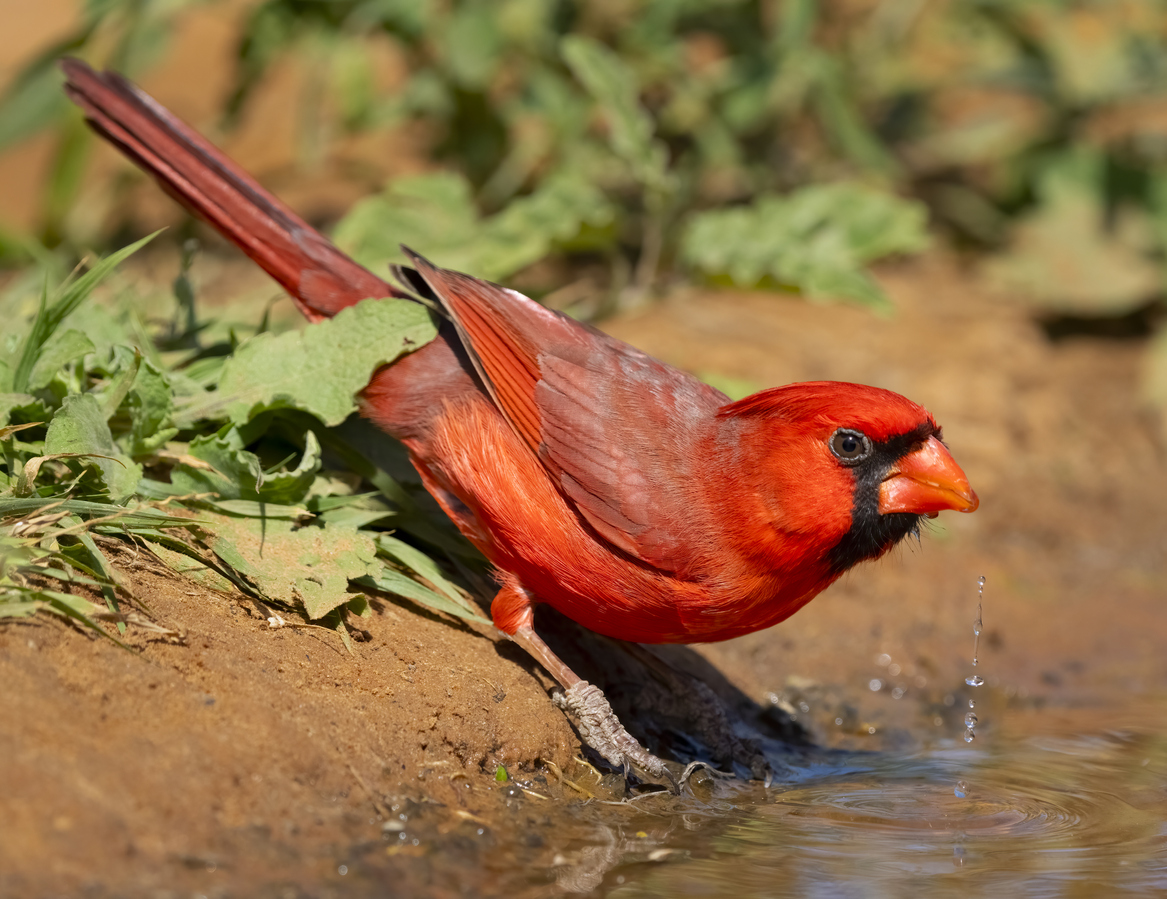

We may earn revenue from the products available on this page and participate in affiliate programs. Learn More ›
Cardinals are vibrant red birds that are found throughout the eastern United States, as far west as Arizona. Their large habitat extends north to Canada and even down to South America. Many people love attracting these gorgeous birds to their garden with bird baths, protective shelters, and some of their favorite foods—including black oil sunflower seeds, safflower seeds, berries, and peanuts. Whether you’re a cardinal fanatic or just intrigued by their unique coloring, interesting facts about these remarkable feathered friends will make them even more endearing.
RELATED: 12 Ways to Predict the Weather by Watching Nature in Your Backyard
The brightest red males are more attractive to females.
Only male cardinals have fully red feathers, and some males have a brighter red coloring than others. Females are most attracted to the males with the brighter feathers. Scientists hypothesize that female birds believe the males with the brightest feathers are superior and will make a better mate. There is also evidence that the more brightly colored male birds have better odds of surviving the winter, are better foragers, and are more able to avoid predators.
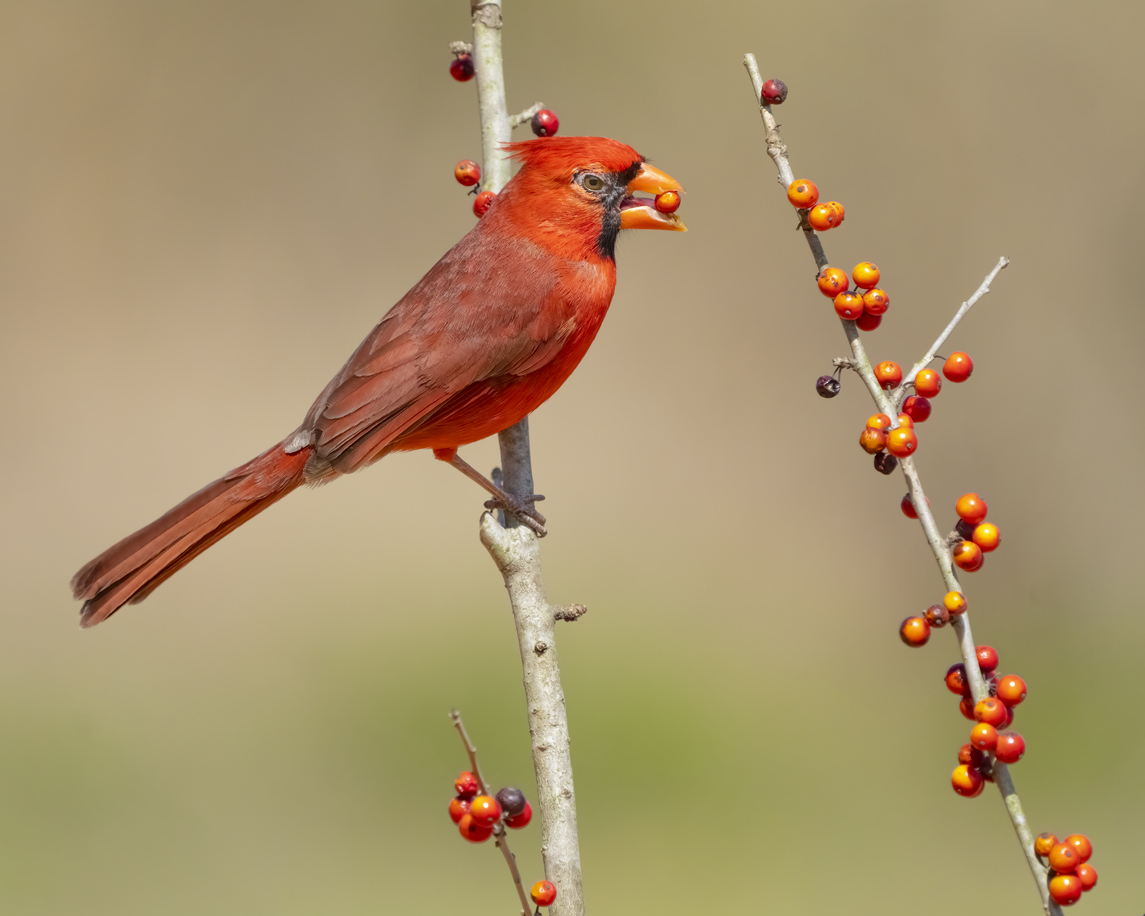
Male cardinals’ red coloring comes from their food.
Cardinals enjoy foods rich in carotenoids, such as berries, wild grapes, apples, and safflower seeds homeowners place in feeders. Eating these carotenoid-rich foods deposits the characteristic red color on a cardinal’s feathers—much like flamingos get their pink feathers from the carotenoids in the shrimp they eat.
Males show affection by feeding females seeds.
When male cardinals are courting a female, they show their affection by feeding seeds to the female. To do so, they forage for the food or select the seeds from a feeder. Then they press their beak right up against the female’s beak, making it look as if the two birds are kissing.
RELATED: The Best Bird Feeders for Cardinals: Transform Your Yard Into a Haven
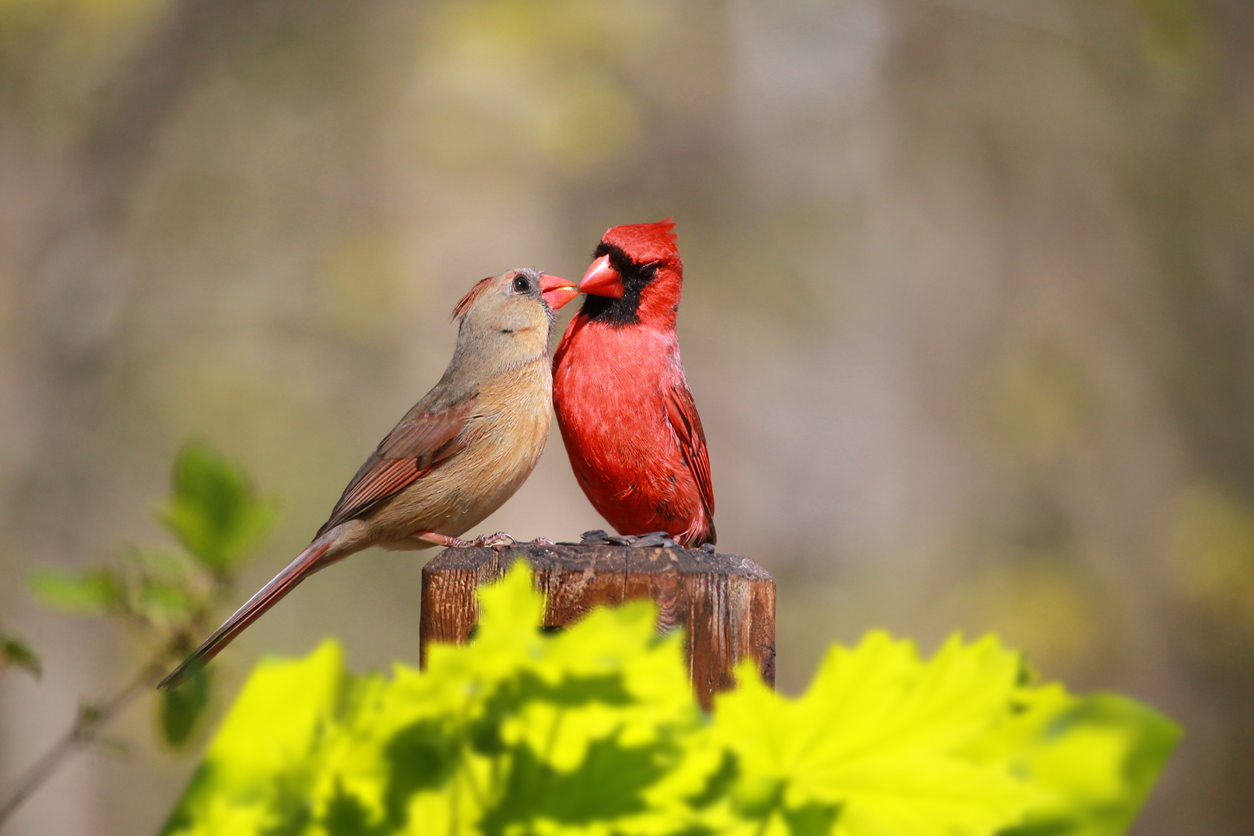
Male cardinals aren’t the only ones who sing.
With many other bird species, only the male will sing. In some cases this could be to avoid predators while nesting, but in others the females may lack the ability to sing. However, female cardinals sing, often back and forth with a courting male. Cardinals sing beautifully—and can produce more than 24 different songs.
Cardinals were named after religious figures.
When the early residents of the American Colonies first saw these birds, they decided to name them “cardinals” after the religious leaders in the Catholic church who share the same name. Their red coloring reminded them of the red cassocks (robes) worn by the Catholic cardinals.
Not all cardinals are red.
Some cardinals do not have the characteristic red pigments in their plumage. Instead, they may have either orange or yellow pigments. Xanthochroism—a genetic plumage variation—is responsible for giving the yellow Northern Cardinal its coloring. The desert cardinal (Pyrrhuloxia) has deep red highlights on its wings, face, and tail, but an overall grayish appearance.
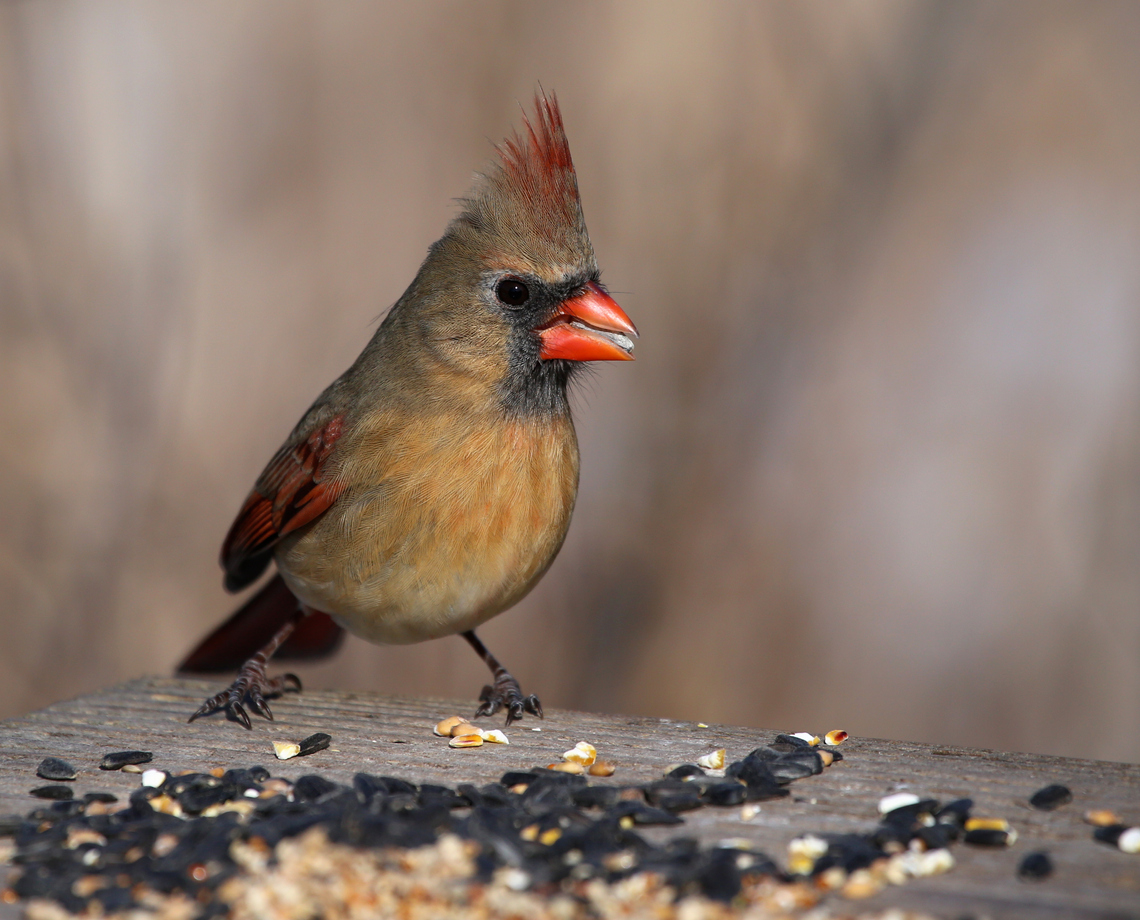
Cardinals may appear to be attacking your windows.
If you’ve ever seen a cardinal repeatedly fly into a window, it might seem like they’re trying to get into your house or attack the window. However, they’re actually attacking their reflection in the window. Cardinals are territorial and can mistake their reflection for another male threatening their space. Making your windows bird-safe by adding decals or netting can help protect both the cardinal and the glass.
RELATED: 10 Surefire Ways to Attract Cardinals to Your Backyard
Cardinals don’t migrate.
While many other bird species migrate and fly south for the winter, cardinals do not. They stay in the same area where they spend the spring and summer and continue to forage for food through fall and winter. They eat insects, grasses, grains, flowers, and berries. In addition to not flying south for the winter, cardinals can be found further north now than they were in the early 1900s.
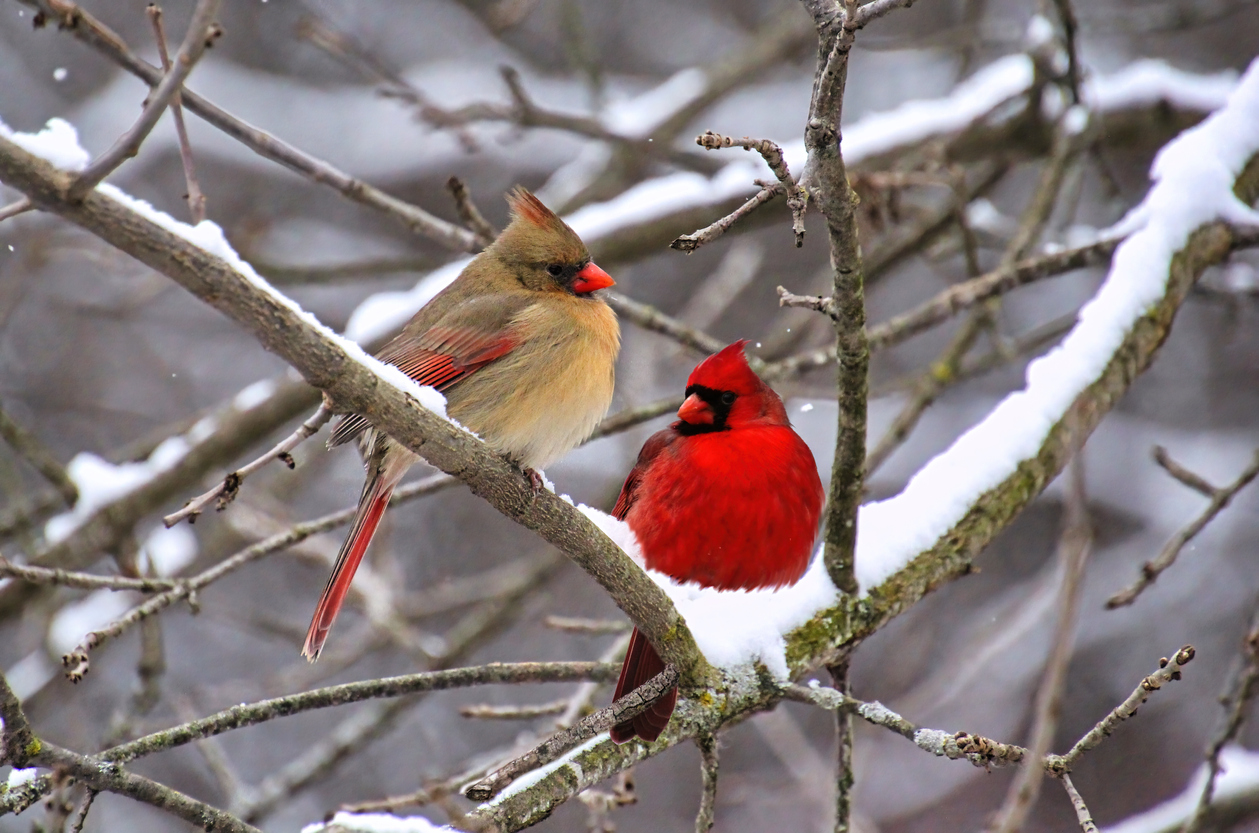
Cardinals may be the first and last birds at your feeder.
If you hang a bird feeder in your garden, you may notice that a cardinal is the first bird you see in the morning, as well as the last one you see in the evening. Scientists have a few hypotheses about why this is often the case. During the early morning and dusk hours, there are fewer other birds around, so cardinals may be trying to get food when there is less competition. Another theory is that the lower lighting at dawn and dusk doesn’t draw as much attention to a cardinal’s bright red feathers, which may offer some protection against predators.
RELATED: The Best Squirrel-Proof Bird Feeders, Tested and Reviewed
Cardinals are a popular mascot.
Two professional sports teams feature the cardinal as their mascot: the Saint Louis Cardinals (Major League Baseball) and the Arizona Cardinals (National Football League). In addition to these professional teams, several other colleges and minor league teams have selected a cardinal for their mascot, including the University of Louisville, Wesleyan University, the University of the Incarnate Word, the Springfield Cardinals, and the Palm Beach Cardinals.
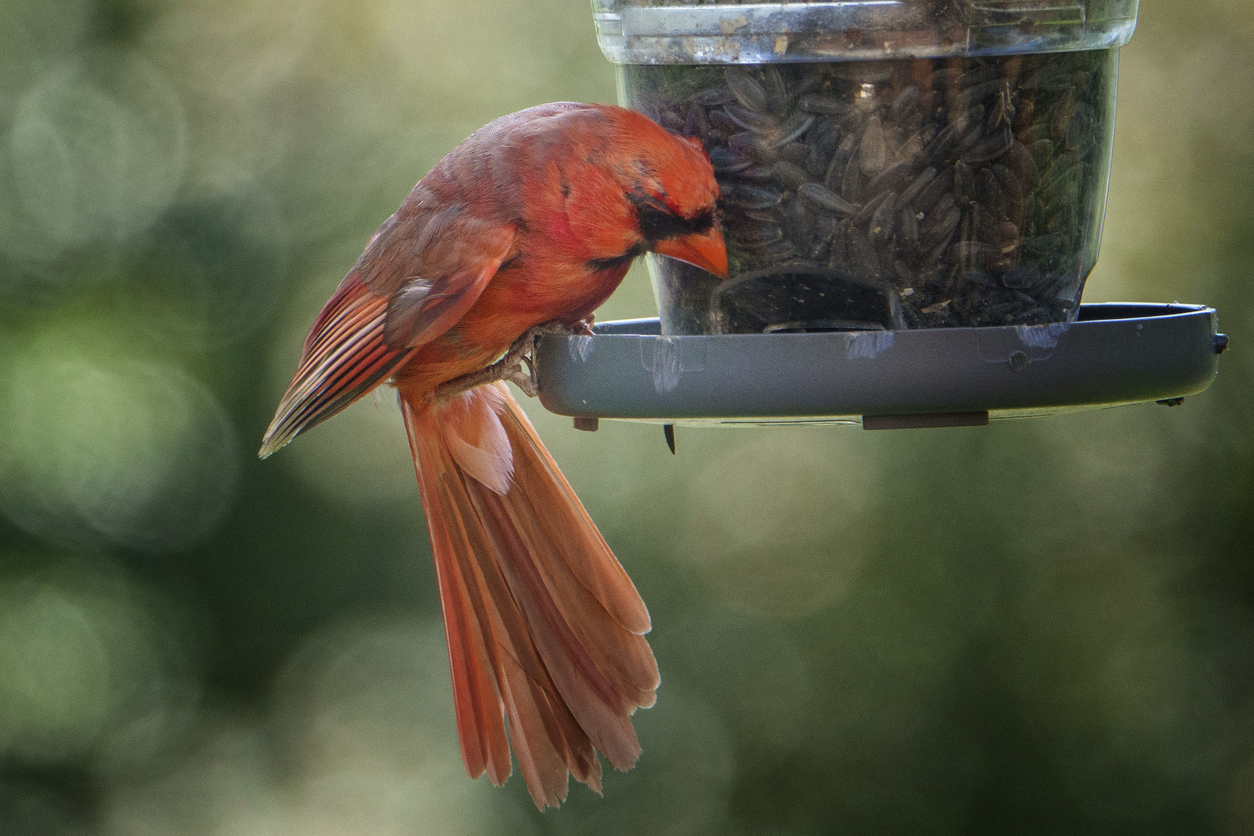
The Northern Cardinal is the state bird for seven states.
The Northern cardinal is the official state bird of North Carolina, Virginia, West Virginia, Ohio, Indiana, Illinois, and Kentucky. State birds are chosen for their recognizable song, beautiful appearance, and commonality in the state.
People used to keep cardinals as pets.
In 1918, when the Migratory Bird Treaty Act was passed, it was no longer legal for individuals to keep a wild bird as a pet. However, before this law was implemented, people did keep wild birds as pets, and the vibrant red color and beautiful songs of the cardinal made them a popular choice.
